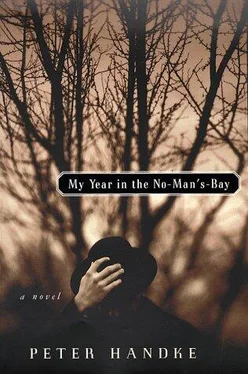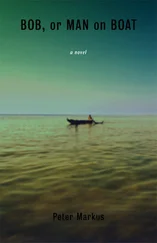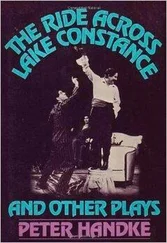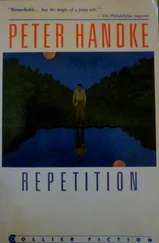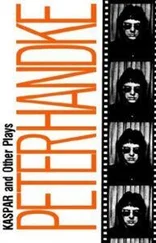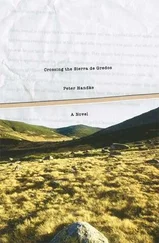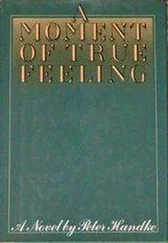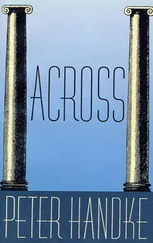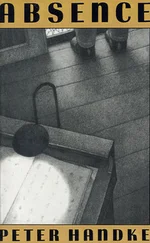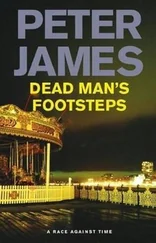And remarkable again that such distance occurred as if without movement, at any rate with hardly anything’s moving noticeably in it. It seemed to the painter as though quiet was a prerequisite for this effect: that the distant grass tip, the distant coast of the forest pond, the distant interwoven pattern of the treetops had to remain nice and still.
Yet the distance over by the garden wall or elsewhere moved him as nothing else could, even the most remote curvature in the universe, and in its presence he thought, “There the world is at peace!”
And it also set him in motion, not toward it, not to circle the pond, in order to dive like a mystic into the distant glow, but in a sidelong direction to appropriate action, creation, spreading the word.
People, many of them, were moved to reflection by his pictures, at first sight so gloomy, and they were happy, even as a crowd, not merely the individuals. Each of his pictures had the same title, La vega negra , “The Black Meadow.” Their unusual format, much wider than high, was simply about twice that of my slate in first grade — exactly right! was my immediate reaction — and likewise every figure or every squiggle, that is, every darker or lighter shading, clearly had its place, its proportion, its distance, just as in classical paintings.
And yet the painter had long since begun to wonder how it happened that, with the passing millennia of human history, distance and images of distance had become more and more significant in this way, whereas, for instance, imperial Rome, including the poet Horace, whom the painter knew somewhat by heart, had had no interest in such things.
Or was it that the current distantness did not yet exist in the spiritual geometry of those times, or merely as an incidental, or only in slaves (but hadn’t Horace’s father been a freedman?)? Had it become fundamental only today? As fragments of distance? fragments, yet fundamental?
That he earned a good deal of money with what he did was something the painter took for granted. He had it coming to him, and every time a head was shaken at the sums paid by collectors, he countered with his standard “That’s the price.” He was “my rich friend”—and doesn’t everyone have one such, more or less?
And yet you could hardly tell by looking at him that he was wealthy. (Only certain women spotted it immediately, and by dozens of indications, from the expression in his eyes to his socks.) The apparent apartment house in which he lived in Paris was a little lower than the others next to it, and still looked like one downstairs in the lobby, except that from there no staircase, only an elevator, took one upstairs, with the entrance to the living area directly outside the elevator; and only later, when the guest was escorted downstairs by way of a spiral staircase concealed behind a door in the wall did he recognize that this upper floor had been merely the dining area, followed, a flight down, by another floor for sitting, conversing, and reading, then one with paintings by old masters, then an entirely empty floor, brightly lit into the farthest corners, and finally the ground floor, taken up entirely by a palatial white-tiled kitchen, with a cook: from top to bottom the tenement was the urban pied-à-terre of the painter, who finally came out with the admission that at the very top, to be reached by a sort of fireman’s ladder, was the bedroom floor, at the same time his observatory, and the acquaintance who had assumed the chore of carrying the meal upstairs? — “he is my servant”—no, he said “factotum.”
It was similar in whichever of his studios you visited, the urban ones as well as the others. In the company of a visitor he could hardly be distinguished from the former. Like him, he could be a dealer, a buyer, a speculator, a critic, a patron. In a dark pinstriped suit: he stood thus, arms crossed, at a distance from the pictures. In the presence of his guests he did not touch them. The actual displaying was done by stooped young people in gray lab coats, not students but assistants, employees, helpers, while the one responsible stood in half-shadow and with a stream of chatter seemed to want to deflect the observer from his creations as if from some awful deed. Only his sidelong glances at the works, from a distance, expressed something different. And not until the observer voiced an opinion — an exclamation was sufficient — did the painter step forward and acknowledge his work, also join in the enthusiasm, show a pleasure in what he had made that often hardly left room for that of the person standing next to him.
Not the fact that he earned so much, and, when he was without his work, outwardly had something of the air of an entrepreneur or a gang boss, secretly disturbed the painter, but rather the thought, which grew more powerful as he got older, that he had won. Merely to be secure was itself uncanny. And a winner, too: self-disgust. If he ever wanted to do away with himself, it was when he imagined that he had outdone or trumped “the others,” “all of them.” To be sure, for him every “Victory!” was immediately followed by “What kind of victory?”
It was something else again that he had got involved in the film. It was by no means a mere whim or an interlude. For one thing, he was not unfamiliar with the cinema, both as a moviegoer of many years, one of the most faithful, passionate, and knowledgeable in all of Spain and France, and as an actor, trained at a school in Madrid, after which he had performed in a few films, in larger supporting roles.
And then the painter saw his film as a variation on his paintings, or an added dimension.
Instead of with his color, black, on a pictorial surface, he now felt the urge to tell about his distance in a film for a change. He was not the first painter to do this, and his dream was a powerful dream. In it, regions and people appeared with an impact very similar to the shadings and figurations of black in his paintings. And the people moved; above all, they spoke.
The painter had a story to tell with his film, a story rich in both events and images, created for the large screen and a thousand-seat theater (such as still existed everywhere in his Spain, at least until this year, even now in the small town of Toro).
And this story had long since been available as a book, one of decisive importance to the young and also to the now almost old painter, William Faulkner’s As I Lay Dying . Time and again he had been astonished that in the almost seventy years during which the farm family from Mississippi had roamed about, having various adventures as they carried the coffin of the dead mother, so as to lay her to rest, as she had requested, in her place of origin, no one seemed to have narrated the film of the story. He, at any rate, felt the need for it. He would have been the first to go to see it. And since the film did not turn up, he wanted to make it, for himself, the moviegoer.
He bought the rights, wrote the screenplay, traced on foot the stations of the coffin expedition, Castile, Galicia instead of the American South, and put together a team consisting of professionals — the technical crew — and nonprofessionals — all the actors.
The problem that arose during the shooting was the painter’s or filmmaker’s decision not to show, as originally planned, the transportation of the mother after her death on a first, long zigzag course through the Spanish interior provinces of Soria, Valladolid, and Zamora, but to jump immediately beyond the Cantabrian Mountains into stone-gray-glittering Finisterre by the sea: for one thing, during that early spring it was raining far more, and also heavily and unceasingly near the Atlantic, which was necessary for it to be visible on film; the rivers were overflowing their banks and thus cutting off the pilgrims’ paths to the grave, as the story required, and forming, like the Mississippi in the book, that great floodplain where the coffin was supposed to disappear in the mud, in danger of never being seen again.
Читать дальше
